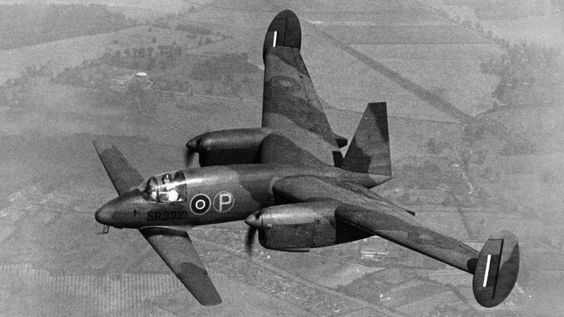Miles M.35 Libellula: Fate of the Aviation
During World War II, the Miles M.35 Libellula, sometimes referred to as the “Flying Jeep,” was a novel and ground-breaking aircraft. The Libellula was created by British engineer F.G. Miles with the goal of being a cheap, adaptable, lightweight aircraft that could help ground forces in a variety of ways. The Libellula had a significant effect on the advancement of military aviation despite never seeing full-scale manufacturing.

Features and design
The Miles M.35 Libellula had an eye-catching design that looked like a wing. It was a low-wing, single-engine, twin-boom aircraft with a pusher propeller in the back. With a wingspan of 44 feet and a length of 25 feet, the aircraft featured a small, light construction.
One of the distinctive qualities of the Libellula was its versatility in terms of payloads. Machine guns, explosives, and even rocket projectiles could all be fitted to it as weaponry. The aircraft could also transport supplies and equipment to far-off sites and carry out missions for casualty evacuation.
Performance
The de Havilland Gipsy Major piston engine that the Libellula used gave it a top speed of around 190 mph and a range of about 500 miles. It could take off and land quickly, allowing it to use makeshift airstrips close to the front lines for operations.
The aircraft’s flexibility and versatility were its primary advantages. It was the perfect aircraft for assisting ground forces in combat because of its versatility in duties including ground attack, reconnaissance, and liaison. Due to its small size and maneuverability, it could fly at low levels, supporting nearby allies’ forces and successfully taking out hostile objectives.
Operational Background
The Miles M.35 Libellula had a promising design and capability, but a number of issues stopped it from going into full production and being used extensively during World War II. The Libellula project was canceled due to the challenging nature of wartime conditions, resource scarcity, and a change in military priorities.
However, Libellula’s idea and design aspects had an impact on later aircraft advancements. It’s adaptability and flying wing configuration predicted later developments in military aviation, including the Northrop Grumman B-2 Spirit stealth bomber and unmanned aerial vehicles (UAVs) with related design philosophies.
Legacy:
Despite not being used in combat during World War II, the Libellula’s design and engineering advancements aided in the development of military aircraft. Future generations of military aircraft were influenced by the idea of a versatile, lightweight platform, especially in the context of unmanned aerial vehicles.
Aviation enthusiasts and historians who appreciate the Libellula’s significance as a groundbreaking aircraft that pushed the limits of conventional design and confounded conventional notions of military aviation continue to honor its heritage.
Conclusion
The F.G. Miles, the design’s creator, Miles M.35 Libellula, is a monument to his intellect and inventiveness. Although it did not find broad operational service, its distinctive design, flexibility, and versatility helped to shape the direction that military aircraft would take in the future. The Libellula is an important period in aviation history because of its novel characteristics and conceptual impact on succeeding aircraft.








